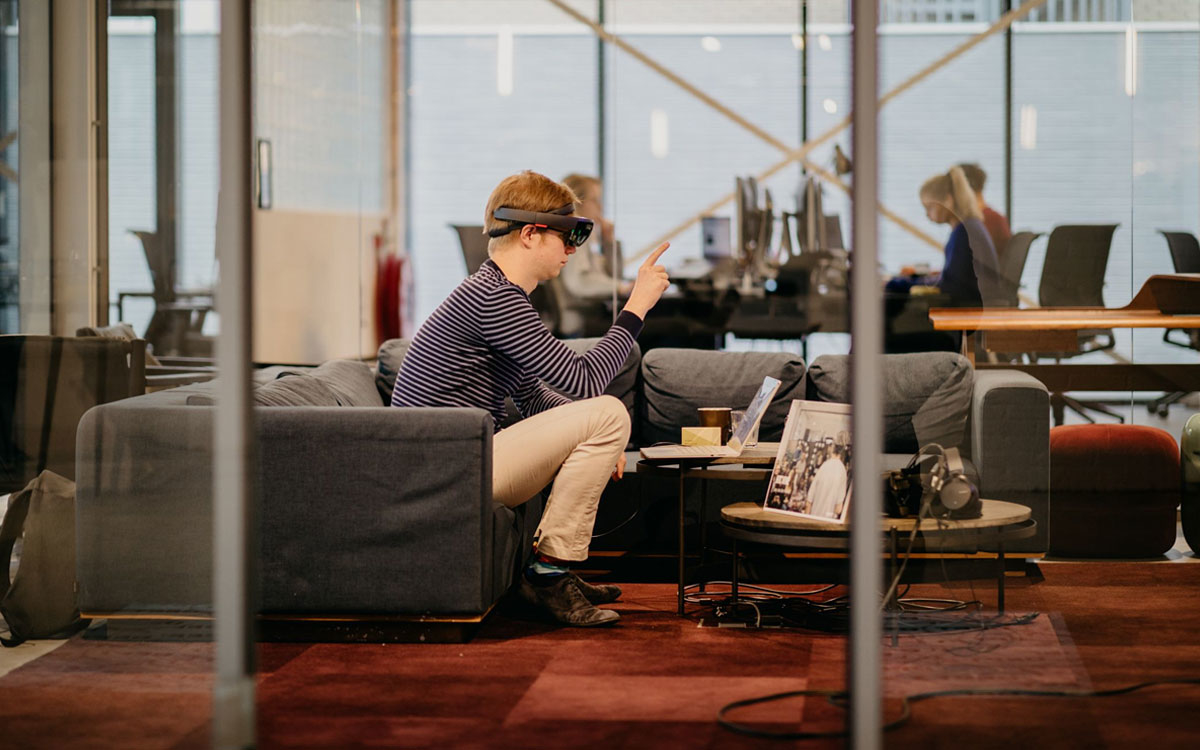The evolution of consumer behaviour is not a fixed timeline; it changes according to social movements and cultural shifts. Technology has had a tremendous impact on advancing consumer expectations by literally placing the power in their hands, while adding pressure on businesses to adapt operations and reinvent strategies to keep up with emerging demands.
The global pandemic has reset the playing field, accelerating digital innovation in a way that puts brands back in the driver seat. The era of adapting to consumer needs and finding solutions to rising challenges has passed. Leading brands are predicting new behaviour and enabling the change through advancements in technology.
To continue to thrive in the new reality, businesses must make bold decisions and embrace how dynamic commerce has become. This future of commerce is all about creating new and unexpected ways for customers to interact with brands across both digital platforms and physical destinations.
The retail revolution
“If the pandemic has proven one thing in retail, it’s how powerful an innovative culture is,” said Jonathan Whiteside, Principal Technology Consultant at DEPT®. “Brands that have collapsed during the pandemic are rooted in traditional ways of retailing and aren’t flexible to change.” For example, Phillip Green, chairman of the retail company Arcadia Group and owner of Topshop, made a public point of rejecting smartphone culture and continuing to use an analogue mobile. This type of resistance at the top-level trickles down throughout the company. In February, Asos acquired Topshop and three other Arcadia Group brands, but not the shops. It was a similar story with Boohoo taking over retail stalwarts Debenhams, Karen Millen, Dorothy Perkins, Burton and Wallis to live exclusively online. While the strategic decision to strengthen their digital platforms with these shopping centre anchors may have been controversial at the time, it’s helped to expedite the next phase of retail.
Recent changes on the high street aren’t an indication that legacy brands will continue to be swooped up by digital-native companies, but it does demonstrate how critical it is for these companies to continuously innovate to retain their market position. “Business culture and open-mindedness are key factors in maintaining a competitive advantage. John Lewis, for example, is not only one of Britain’s longest-standing department stores, but it’s also the largest employee-owned business in the UK. When The John Lewis Partnership was created it was an unconventional way of putting people first, and involving the workforce in key decision-making. This mindset of continuously evolving the business model just happens to transfer really well into technological transformation,” Whiteside said.
An experiential future
High street retail is evolving from a place people primarily went shopping into an experiential destination. Nowadays, almost every purchase is started online. And, even though shoppers are accustomed to using digital channels and many prefer purchasing through them, they find it lacks experience. This sentiment nods to the need for a physical brand presence for consumers to see, touch and engage with products; not necessarily to buy or seek assistance. Adding an experiential human component within the brand ecosystem resonates with a wider demographic and builds loyalty.
With the information we have now, it’s easy to understand how missed opportunities led to the collapse of many businesses, including Toys R Us, explains Whiteside: “Once at the centre of the industry for child’s play, the brand failed to implement digital channels and relied heavily on its storefront locations. Eventually, a trip to the shop alone was no longer enough for a fun day out. There was no hands-on experience to draw kids in, like what you get in a Hamleys or a Lego store. If they did more to keep customers happy, been less functional and more on-trend, their fate may have been different. The demise of Toys R Us was not inevitable, they just weren’t dynamic enough. Perhaps if they utilised their real estate for multi-sensory play centres, and invested in social media and e-commerce they would still be leading today.”
A transformative future for the high street
Tesla is a game-changer for car showrooms. They’re a place to experience the vehicles rather than buy them, and if you’ve indicated in the store that you’re interested in purchasing a vehicle, you’ll receive details via email about how to order it online. “Tesla has reinvented how an automaker should sell its vehicles, and is rewriting the industry’s negative history associated with price haggling, pushy salespeople and ignorant consumer profiling,” said Whiteside. “The only way for brands to take inherited biases out of the customer experience is to remove humans in some cases, and make every stage objective, providing the same brand experience for everyone.” Tesla’s approach to using data to educate and excite customers, rather than a generic sales strategy, is well known for converting consumers into buyers and brand advocates.
Bricks and mortar retail stores are expected to follow suit, giving a new reason for consumers to visit. Nike is testing a new experiential store format in China called Nike Rise that serves as a hub for sports enthusiasts, with in-store events and new app features. Nike hopes the initiative will boost its direct-to-consumer sales with increased foot traffic and increased customer insights via the app.
Banks are reimagining their branches into coffee shops, providing a complimentary lounge for their members to use their facilities and relax. With the turn to online banking and a cashless society, people are less likely to go to the bank. Repurposing their city-centre spaces into a cafe, with banking staff available if you need them, is a great tactic to boost membership and loyalty.
Introducing commerce everywhere
In the age of experimental retail, ‘commerce everywhere’ has emerged as a marketing strategy to facilitate transactions across multiple customer touchpoints. Technology that promotes products and enables sales is being implemented into both digital channels and physical locations.
This strategy is already being rolled out by fashion and luxury brands, who are turning to live shopping and social media commerce. Also blurring the lines between entertainment, editorial and shopping are media companies such as online fashion publisher Highsnobiety, who introduced e-commerce functionality into its media brand. This allows Highsnobiety to provide an end-to-end experience for its audience by connecting the products they are referencing in their content with a gateway to purchase. It also allows the brand to launch new and limited product drops on a continuous basis to drive consistent web traffic and sales. BuzzFeed also launched into e-commerce by supplementing its articles and listicles with feature items from retail partners. Shoppers are not directed away from BuzzFeed at any point during the transaction, allowing BuzzFeed to own the entire consumer journey.
Devices used to power smart homes may have been the inspiration for this next innovation in automotive. The widely popular cloud-based technology is used to control everything in the household from security to feeding pets, maintaining temperature and automating grocery orders. Vehicle manufacturers are taking the ‘commerce everywhere’ strategy to the next level by introducing big data, AI and IoT into the dashboard. This technology can detect when maintenance is required and enable the vehicle owner to take action. For example, if a part needs to be replaced, not only will the driver be notified on the user interface screen, but they can verbally order items to their home or schedule appointments with their preferred garage, based on their details programmed into their profile.
Take inspiration for your next innovation
It wasn’t long ago that shoppers made impulse decisions inspired by aisle promotions or window displays. Now, consumers are making informed choices based on their own findings and values. Advancements in technology are changing consumer behaviour. Apple has laid a lot of the groundwork by launching Apple Pay, making it normal practice for users to store card details in their mobile devices, accelerating touchless in-store payment. The introduction of fingerprint and facial recognition has made the digital checkout process even easier. How quickly society adapted to virtual wallets should signal to brands to evolve this concept.
“Commerce is quickly becoming ingrained in every aspect of our lives, and brands that leverage new technology to predict when items are needed or most desirable will lead the way. The next phase of retail is all about understanding customers, serving up relevant options, and creating a seamless purchasing journey; one where the customer doesn’t need to switch apps or close their browser to further the research or purchase,” said Whiteside.
Join our livestream event on 14 april 2021
The future of commerce is frictionless, experiential, and everywhere. Join Jonathan Whiteside and James Dye, UK Business Director at commercetools, at the Digital City Festival where they’ll discuss the Future of Multi-Experience Commerce. The talk is designed to inspire a wide audience from technology enthusiasts and retail innovators to everyday consumers. Sign up here to grab your free Digital City Festival pass and join the live stream at 2:00pm on Wednesday 14th April.





